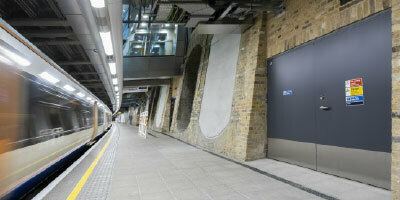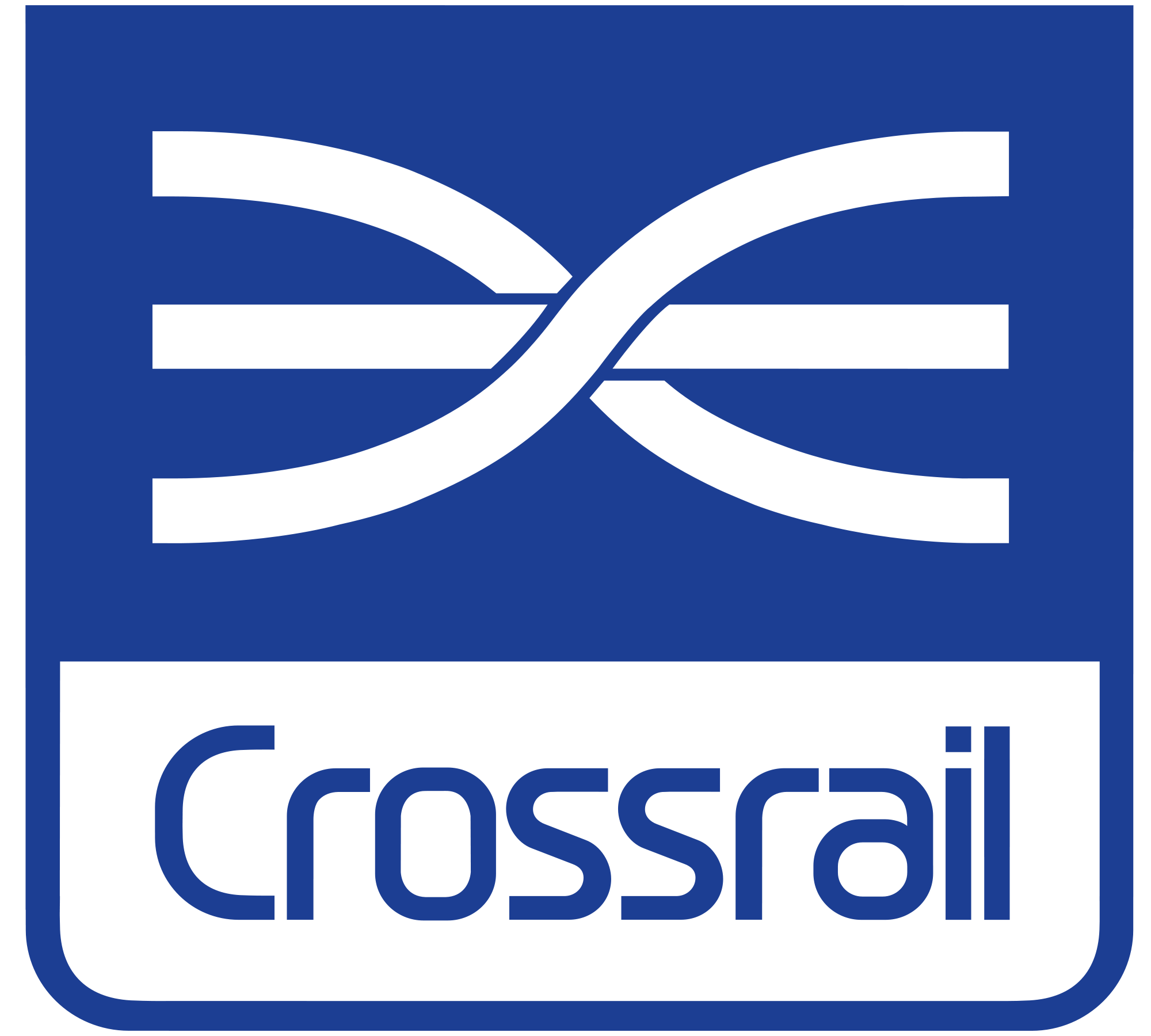Doors in underground stations not only have to meet fire protection, security and safety requirements, but in particular they have to be able to handle pressure. This was also one of the key requirements for the doors of the new Crossrail stations in London. Here, security doors were required that had to be fire, sound and pressure resistant. Teckentrup was able to offer appropriate door solutions with corresponding conformity, which also complied with the revised, stricter version of LPS 1175 for proof of product certification. In addition, all required values for soft impact tests, structural strength data, „U“ values, cycle tests and life cycles could be met. This tipped the scales in favour of the German manufacturer when the project was awarded and, with the stations Whitechapel and Liverpool Street marked the start of a successful collaboration.


Crossrail is a rail project still under construction in London. It is currently one of the largest rail projects in Europe. It will be a new suburban rail link connecting parts of Berkshire, Buckinghamshire and Essex with the central and south-eastern districts of Greater London, taking pressure off the London Underground. It will run for 60 miles from Reading and Heathrow in the west through London to Shenfield and Abbey Wood in the east. The railway is expected to serve around 200 million passengers a year when completed in the mid-2020s. The rail route comprises a total of 41 stations, ten of which have been newly built and 30 of which have been upgraded. Overall responsibility for the project lies with Crossrail Ltd, which has been owned by Transport for London (TfL) since 2009.


The starting point for the collaboration between Teckentrup and Transport for London was the construction of Liverpool Street Station. The German door manufacturer supplied 200 steel doors and door elements, solely for this construction phase. Teckentrup worked closely with the construction team on site to find a solution for a particular challenge: a 5 m x 5 m door with two integrated SR3 panic doors (similar to the European standard RC4), which were to be cladded with a material that matched the look of the stations. Teckentrup supplied a certified product for this and thus fulfilled its promise to the customer as a problem solver.




Part of the major transport project is the extension of Whitechapel station. This station is an important interchange between London Underground and London Overground. The station of the new Elizabeth Line is closely interwoven with existing transport services. The platforms of the new line are located to the north of the existing station, with access via escalators. The work, carried out by BBMV (Balfour Beatty, Morgan Sindall and Vinci Construction), includes five manholes and 500 metres of platform. A particular challenge in the construction of such a station is access, as this is exclusively via manholes for all works.
The project planning for this construction phase began in 2016, and the first installations started in July 2017, starting with the shafts and special pressure ventilation areas. The shafts go down 30 metres and cover six levels underground. Here, doors with 5kPa pressure protection on both sides, fire retardancy and sound insulation were required to maintain the required pressure needed for airflow into the station and tunnels. In a potential fire scenario, the doors must also be able to withstand higher pressures as fan speeds, and consequently pressure, increase.
Underground railway stations place high demands - also on the doors. Here, doors with pressure protection, fire resistance and sound insulation were required.



Ducts also generate high sound levels. To mitigate sound transmission, a double door solution was developed specifically for the Crossrail project. Teckentrup‘s DW67 door with a sound level of 57 dB was combined with a second T60 door with a sound level of 42 dB, a pressure of 5 kPa in both directions, SR3 security and a fire resistance of 120 minutes integrity and 60 minutes insulation. The door sizes here were 3.2 m2, typical for the high specification required.
The project was therefore a special challenge not only on the British side, but also for the development and production departments on the German manufacturer‘s side. Close coordination between the two countries was necessary to get the specially adapted product into production as quickly as possible.

Björn Jasperneite I Technical developer and project coordinator on the German side, responsible for a smooth exchange between the different agencies.


Customised manufacture: In addition to the special double-door solution, the door sizes of 3.2 m2 and over were also typical of the high specification required.
After the shaft work was completed, construction work started on the other areas - the platforms, the side tunnels and the administration buildings. The Group Station Manager‘s (GSM) building includes offices for management as well as plant and equipment rooms on the lower floors. The building is in close proximity to the platforms and has 65 doors, many of which are external doors with SR3 certification. With the completion of the project in 2021, additional exterior doors were installed in the final phase, some with special brass finishes that blend perfectly with the station‘s architecture in terms of design.

Large construction projects are under great cost pressure. Therefore, every Teckentrup product is embedded in a process optimisation concept. The company relies on a comprehensive service - from planning to the operation of the products. Teckentrup is at your side with consulting and planning services, ensures just-in-time delivery if required and can also be reached for short-term problem solutions during the construction phase at any time. So you can be sure that you will receive the right solution for all requirements of your property and that your needs for design, security and service will be met.



Jim Rodger I Managing Director, Teckentrup UK Ltd.
To date, Teckentrup has supplied almost 2000 steel doors throughout the project for the following purposes:
Requirements of doors up to 4.2m x 4m in size:
Not at least because of this solution-oriented approach, Teckentrup became the main supplier for the sub-sequently planned Whitechapel station as well as many other stations along the new railway line. Meanwhile, Teckentrup has become an important partner for the contractors involved, who are consulted on all questions relating to doors: whether it is the integration of the doors in accordance with standards, a suitable appearance, fire protection or safety systems, the company always offers solution-oriented approaches as part of the project team.
Teckentrup‘s understanding therefore also includes proactively pointing out potential areas of concern, possible modifications, and solutions before going to the construction site and starting the installation. This ensures that the stations are up and running on time. Errors that jeopardise the construction progress are detected in advance and can therefore be prevented.
A project usually starts with a request for a specific door and its specification, but it usually becomes clear very quickly that without an integrated and detail-ori-ented approach to the building and the design of the construction project as a whole, no ideal solution can be achieved. Teckentrup has understood this.


